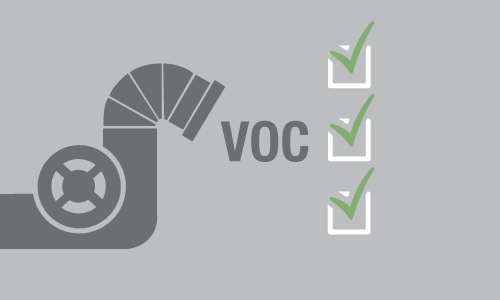There are many types of VOC abatement methods available. Read our article to find out if rotary concentrator combined with an oxidizer is ideal for your facility.
There’s no denying the negative impact that air pollution has on the environment. Contaminants such as volatile organic compounds, also called VOCs, contribute to the formation of ozone (EPA). This, in turn, produces smog and other organic aerosols that have adverse effects on our health and on the environment.
Because of this, plants and manufacturing facilities of all sorts need to implement VOC abatement technologies that help reduce their dangerous emissions. Rotary concentrator systems offer an efficient solution that can typically destroy up to 96% of all pollutants when combined with an oxidizer. In this article, we will discuss the benefits of rotary concentrators, how they work, and what industries they are typically used in.
VOC Abatement Requirements and Regulations
All manufacturing facilities and production plants need to adhere to the standards set by the Clean Air Act (EPA). The Act was designed to dramatically reduce air pollution and help improve the quality of the stratospheric ozone layer. Plants and production facilities now need to implement VOC abatement techniques that destroy the pollutants before they enter the environment.
The best VOC abatement technique will depend on each specific facility. To identify the best type of abatement technique, you have to look at air flow rate, VOC concentration, and the type of pollutants you want to destroy, among other things.
Rotary concentrator systems offer a great alternative for high volume air streams that have low VOC concentration. This abatement system consists of a rotating piece of machinery that is made of corrugated mineral fiber material, which is in turn coated with a hydrophobic zeolite media. This absorbs the pollutants, which are then destroyed by means of an oxidizer.
Benefits of Rotary Concentrator Systems
There are numerous methods available that help destroy contaminants before they enter the atmosphere. Like most other abatement techniques, rotary concentrator systems are designed for specific facilities. However, these rotary concentrator systems combined with thermal, catalytic, or regenerative thermal oxidizers offer some benefits and advantages that make them more suitable for specific uses. These include:
High Destruction Rates
As we mentioned before, rotary concentrator systems can achieve high destruction efficiency rates. Although most VOC abatement standards demand destruction rates of 95%, rotary concentrators combined with an oxidizer can often guarantee higher rates than the established standards.
Suitable for Different Applications
These abatement systems can be installed in an array of different facilities, as long as they have a high exhaust rate and low concentration levels. Because rotary concentrators work similarly to a filter, they collect pollutants and destroy them once the concentration levels are high enough.
Low Operating Costs
The rotary concentrator wheel, by concentrating the VOCs in the airstream sent to the oxidizer, reduces or eliminates the need for supplemental fuel to operate the oxidizer. As a result, these abatement mechanisms are extremely cost-effective to run on an hourly basis, allowing manufacturing facilities to operate around the clock and abide by EPA regulations at the same time.
Choosing the Best Oxidizer for Your Facilities
In order to find the best abatement mechanism, you need to look at your operations, the type of pollutants your plant produces, and the exhaust rate. As for the abatement method, always remember to consider:
- Noise levels
- Site requirements
- Expandability and system flexibility
- Maintenance and repairs
- Operating costs
- Possibility for future improvements
If you are looking for high-quality rotary concentrator systems or any other type of VOC abatement technique, get in touch with The CMM Group. You can give us a call or fill out our online contact form today!




